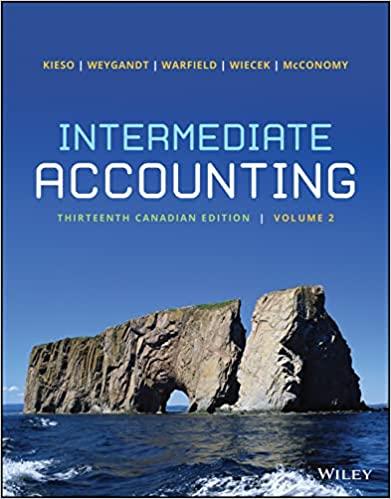On January 2, 2018, Kowalchuk Corporation, a small company that follows ASPE, issued $1.5 million of 10%
Question:
On January 2, 2018, Kowalchuk Corporation, a small company that follows ASPE, issued $1.5 million of 10% bonds at 97 due on December 31, 2027. Legal and other costs of $110,000 were incurred in connection with the issue. Kowalchuk has a policy of capitalizing and amortizing the legal and other costs incurred by including them with the bond recorded at the date of issuance. Interest on the bonds is payable each December 31. The $110,000 of issuance costs are being deferred and amortized on a straight-line basis over the 10-year term of the bonds. The discount on the bonds is also being amortized on a straight-line basis over the 10 years. (The straight-line method is not materially different in its effect compared with the effective interest method.) The bonds are callable at 102 (that is, at 102% of their face amount), and on January 2, 2023, the company called a face amount of $850,000 of the bonds and retired them.
Instructions
a. Ignoring income taxes, calculate the amount of loss, if any, that the company needs to recognize as a result of retiring $850,000 of bonds in 2023. Prepare the journal entry to record the retirement.
Round to the nearest dollar.
b. How would the amount of the loss calculated in part (a) differ if Kowalchuk’s policy had been to carry the bonds at fair value and thus expense the costs of issuing the bonds at January 2, 2018? Assuming that Kowalchuk had followed this policy, prepare the journal entry to record the retirement. Assume the redemption price approximates fair value.
c. How would your answers to parts (a) and (b) change if Kowalchuk followed IFRS?
Step by Step Answer:

Intermediate Accounting Volume 2
ISBN: 9781119740445
13th Canadian Edition
Authors: Donald E. Kieso, Jerry J. Weygandt, Terry D. Warfield, Irene M. Wiecek, Bruce J. McConomy





